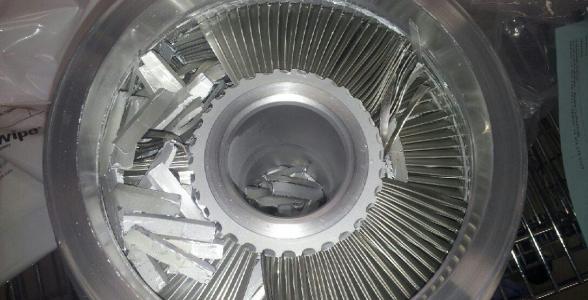
Catastrophic Moments In High Vacuum
Cascade TEK’s hi-vac ovens utilize a turbo pump to get into vacuum levels in the 10-7torr range. The interior of a turbo pump is loaded with blades that spin as fast as 20,000 rpm to achieve those hi-vacuum levels. The catch is…. turbo pumps cannot pump at atmospheric pressure. Turbo pumps should only be activated once the 1st stage “rough” vacuum pump has already pumped the system down to a pressure level that is low enough for the turbo to work.
Good vacuum practice means having the turbo pump’s operation interlocked. The turbo will only energize after the vacuum gauge says the chamber has reached a low enough pressure for the turbo pump to work properly. This is standard and redundant practice on Cascade TEK’s SVO-10 high vacuum oven.
What when wrong here?
The interlock vacuum gauge starts to fail/misread. It may be contaminated with outgassing epoxy, goo or contaminates as part of the vacuum bake-out process.
The operator is suspicious and singularly focused on the flaky gauge. He decides to over ride the controls and immediately vent the oven, returning it to site pressure to inspect. Overlooked by the operator, the turbo is pumping away, blades spinning at 20,000 rpm when the operator floods it with air. CRUNCH! There goes a $20,000 turbo pump.
The moral of the story…
There are specific pump down and return to atmosphere sequences when using a turbo pump. They are automated and interlocked for good reason.






